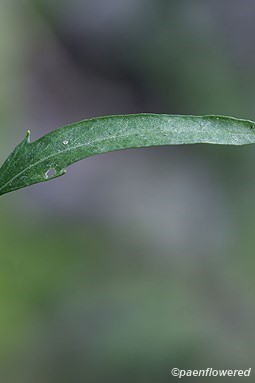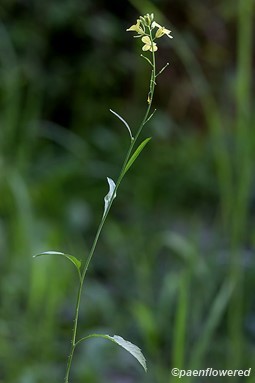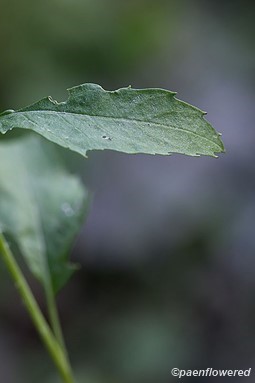Brassica nigra
Brassica nigra black mustard
This alien annual plant can easily be seen along the roadsides of this area. It is native to southern Europe and possibly South Asia. From a distance it looks like a slim-stemmed bush with small yellow globes on the ends of the branches. These globes, when seen up close, are clusters of yellow flowers with the four petals typical of the mustard family. The ½ inch flowers bloom continuously from June to October progressively up the stem. Behind the blooming area, 4-inch long seedpods form that lie close to the stem.
The lower leaves are roughly lobed and bristly. There is usually one terminal lobes and about 4 lateral lobes. The upper leaves are lance-shaped, toothed, and hairless. The leaf stems tend to clasp the stem. The plant can grow 2-3 feet tall and is common in waste places, roadsides and fields throughout the area. This species is related to many other plants in the mustard family, including common vegetables like cabbage, cauliflower, broccoli and Brussels sprouts. The young leaves and unopened flower buds of the black mustard can be cooked and eaten. The small black or brown 1-millimeter seeds are used for seasoning in making pickles and in making the condiment mustard. The plant has also had traditional medicinal uses. Songbirds eat the seeds of the wild black mustard and these are sometimes included in commercial birdseed for caged birds. The related Chinese or Indian mustard (B. juncea) has a stem that is smoother, with a whitish bloom. The Indian mustard is now more widely used commercially than the black mustard.
Habitat & Range
Frequent in fields & low ground.
Present throughout the state.
Wetland code: Not classified
Phenology
Flowers June to October.







Comments
Have you spotted this plant in your area? We'd love to hear about your experience! Share your comments or questions about the plant below. Comments are moderated before posting.